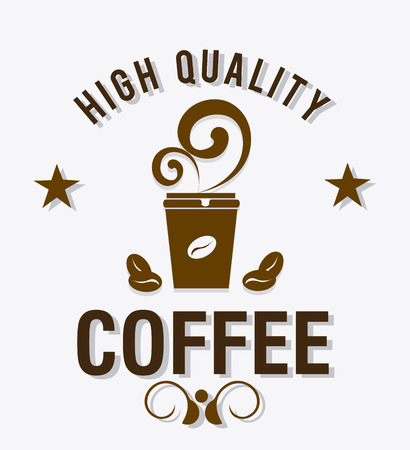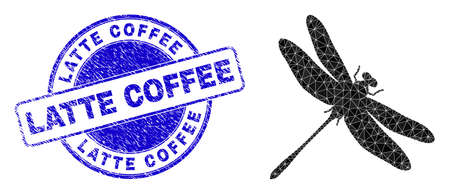1. Understanding the Basics: What Makes an Espresso Machine Budget or Premium
When youre shopping for a home espresso machine, youll quickly notice a wide range of prices—from under $200 to well over $2,000. But what exactly sets a budget machine apart from a premium one? Let’s break down the key differences so you can decide which type fits your coffee lifestyle.
Build Quality
One of the most obvious differences is the materials used. Budget machines often use more plastic parts, while premium models are typically built with stainless steel and brass components. This affects not only durability but also heat retention and overall machine longevity.
Pressure Consistency
Espresso relies on consistent pressure—ideally 9 bars—to extract the rich flavors from coffee grounds. Budget machines might struggle to maintain steady pressure, leading to weaker or inconsistent shots. Premium machines usually feature commercial-grade pumps that deliver stable pressure for better-tasting espresso every time.
Temperature Control
Temperature is another critical factor in brewing great espresso. Inexpensive machines often have limited temperature stability, which can result in sour or bitter shots. High-end machines usually come with PID (Proportional-Integral-Derivative) controllers that allow precise temperature regulation, helping you pull consistent and flavorful shots.
Included Features
The features included can vary significantly:
| Feature | Budget Machines | Premium Machines |
|---|---|---|
| Steam Wand | Basic, less powerful | Professional-grade with full control |
| Grinder Integration | Usually separate or low-quality built-in | Often includes high-end built-in grinders |
| User Interface | Manual buttons or knobs | Digital displays and programmable settings |
| Water Reservoir Size | Smaller, needs frequent refills | Larger, sometimes plumbed-in options |
| Heat-Up Time | Longer (up to 5–10 minutes) | Faster (some under 1 minute) |
| Cup Warmer | Rarely included | Standard on most models |
Who Are These Machines For?
Budget Espresso Machines:
If youre just getting into home espresso and want to test the waters without a huge investment, a budget machine might be perfect. Theyre ideal for casual drinkers who enjoy a daily cappuccino or latte but arent chasing barista-level perfection.
Premium Espresso Machines:
If you’re serious about espresso and want café-quality results at home—or if you entertain guests regularly—a premium machine offers performance, consistency, and durability worth the higher price tag.
The best choice depends on how much youre willing to invest in your coffee habit and how important quality and customization are to you.
2. Initial Cost vs. Long-Term Value
When it comes to buying an espresso machine for home use, the price tag can be a real head-scratcher. Budget models often seem like a steal at first glance, but are they really saving you money in the long run? Let’s break down the trade-off between initial cost and long-term value.
The Real Cost of Ownership
A budget espresso machine might cost under $200, while a premium one can easily exceed $1,000. But beyond the sticker price, there’s more to consider—like how long it lasts, how often it needs repairs, and whether it consistently delivers quality espresso over time.
Budget vs. Premium: Key Differences
| Feature | Budget Machine | Premium Machine |
|---|---|---|
| Initial Price | $100–$300 | $800–$2,500+ |
| Lifespan | 2–5 years | 10+ years |
| Repair Frequency | Higher | Lower |
| Coffee Quality Consistency | Inconsistent | Highly consistent |
| Parts & Service Availability | Limited | Widely available |
The Value of Durability and Reliability
If you’re pulling shots daily, a budget machine might wear out quickly or need frequent repairs that add up over time. On the flip side, premium machines are built with higher-quality components and often come from brands that offer strong customer support and replacement parts—making them easier (and cheaper) to maintain in the long haul.
Savings Over Time
A key point many coffee lovers overlook is how premium machines can actually save money over several years. If you invest in a reliable model that lasts 10 years or more with minimal maintenance, youre spreading that cost out over thousands of espresso shots. That could bring your per-cup cost way down compared to replacing a cheaper machine every few years—or worse, making more trips to the coffee shop because your home setup just isn’t cutting it.
An Example of Long-Term Cost Comparison:
| Budget Machine (replaced every 3 years) | Premium Machine (lasts 10+ years) | |
|---|---|---|
| Total Cost Over 10 Years (Machine + Repairs) | $900–$1,200 | $1,000–$1,500 |
| Coffee Shop Alternative ($4/day) | $14,600 over 10 years | |
This shows that even high-end machines can be a smart investment if youre committed to making espresso at home. While the upfront cost might feel steep, premium machines often pay for themselves through better performance, fewer breakdowns, and longer lifespans.

3. Quality of Espresso at Home: Does Price Equal Better Taste?
When it comes to making espresso at home, one of the biggest questions is whether more expensive machines actually deliver better-tasting coffee. Is the price tag really worth it, or are budget machines good enough for most people? Let’s break it down and see how much quality you’re really getting for your money.
The Taste Test: Can You Tell the Difference?
For seasoned espresso lovers, subtle differences in flavor, crema texture, and aroma can make or break a shot. Premium machines often offer greater temperature stability, consistent pressure, and finer grind control—all factors that directly affect taste. But for casual drinkers, these nuances might not be as noticeable.
Who Notices the Difference?
| User Type | Likely to Notice Taste Differences? |
|---|---|
| Casual Coffee Drinker | Not likely |
| Coffee Enthusiast | Somewhat likely |
| Espresso Aficionado | Very likely |
If youre someone who enjoys a latte every now and then or mostly adds milk and sugar, a budget-friendly machine may suit your needs just fine. However, if you enjoy sipping espresso straight and appreciate complex flavor notes, youll probably notice the improvements a premium machine brings.
Main Factors That Affect Espresso Quality
The quality of espresso isnt just about the machine’s price—it’s also about what features it includes. Here are some key differences between budget and premium models:
| Feature | Budget Machines (Under $300) | Premium Machines ($800+) |
|---|---|---|
| Temperature Control | Basic or inconsistent | Precise and stable |
| Brew Pressure | Might fluctuate | Consistent 9 bars |
| Burr Grinder Integration | Seldom included | Often built-in or compatible with high-end grinders |
| User Control | Simplified settings | Dose, time, pre-infusion options |
A budget espresso machine can still produce a decent shot—especially with fresh beans and a good grinder—but if you’re chasing café-quality results at home, the advanced features on higher-end models do make a difference over time.
The Role of Consistency
This is where premium machines really shine. Even if a budget machine occasionally pulls a great shot, it may struggle to replicate that quality every single time. Premium machines offer consistency shot after shot, which matters most to those brewing daily or hosting guests.
The Bottom Line on Taste vs. Price (So Far)
If youre aiming for solid coffee without fussing over extraction details, a well-reviewed budget model might do just fine. But if you care deeply about taste precision and repeatable results—or want to learn barista-level skills—a premium machine offers the tools to get there.
4. Ease of Use and Learning Curve
When deciding between a budget or premium espresso machine for home use, one major factor to consider is how easy the machine is to operate. The learning curve can vary quite a bit depending on the price point and features included.
Budget Espresso Machines: Simplicity First
Most budget-friendly espresso machines are designed with beginners in mind. They often come with semi-automatic or fully automatic features that take much of the guesswork out of brewing. These machines usually include preset buttons for espresso shots, steam wands for milk frothing, and automatic temperature controls.
Key Features of Budget Machines:
- One-touch operation
- Built-in grinders (on some models)
- Preset shot volumes
- Automatic milk frothers (in combo models)
This makes them perfect for casual coffee drinkers or those just getting into home espresso. However, they may offer limited customization options for those who want to fine-tune their drinks.
Premium Espresso Machines: Control and Customization
High-end machines are often designed with experienced users or aspiring baristas in mind. These machines typically feature manual or semi-manual controls, allowing you to adjust variables like grind size, water temperature, shot timing, and pressure. While this opens up a world of possibilities for crafting the perfect cup, it also means a steeper learning curve.
Key Features of Premium Machines:
- Manual shot control
- PID temperature settings
- Professional steam wands
- Pressure profiling (on advanced models)
If youre willing to invest time in learning, premium machines can deliver café-quality results at home—but they’re less forgiving for beginners.
User-Friendliness Comparison Table
| Budget Machines | Premium Machines | |
|---|---|---|
| User Experience Level | Beginner-friendly | Intermediate to Advanced |
| Main Controls | Automatic/Semi-Automatic | Semi-Manual/Manual |
| Coffee Customization | Limited options | Highly customizable |
| Learner-Friendly? | ✓ Yes – Easy to get started | ✗ No – Requires practice and patience |
| Error Tolerance | ✓ More forgiving of mistakes | ✗ Precision required for good results |
No matter your experience level, theres an espresso machine out there that fits your comfort zone. Choosing between ease-of-use and full control depends on whether you want convenience or the ability to craft your brew down to the last detail.
5. Lifestyle Fit: What Kind of Home Barista Are You?
Choosing between a budget or premium espresso machine isn’t just about the price tag—it’s about your daily habits, lifestyle, and how deep you want to dive into the world of home espresso. Let’s figure out what kind of home barista you are so you can decide which type of machine really fits your needs.
How Often Do You Brew?
If your espresso habit is more of a weekend treat than a daily ritual, a budget machine might be all you need. But if youre pulling shots every morning—or even multiple times a day—a premium machine could offer the consistency and durability that makes your routine smoother.
Ask Yourself:
- Do I make coffee every day or just occasionally?
- Do I entertain guests who also enjoy espresso drinks?
What’s Your Skill Level?
Are you new to espresso, or do you already know your way around grind size, tamping pressure, and milk texturing? Budget machines are often more user-friendly and come with built-in features like pressurized portafilters that make it easier for beginners. On the other hand, premium machines give more control and precision—perfect for those who want to refine their barista skills.
Skill Match Table:
| Skill Level | Recommended Machine Type |
|---|---|
| Beginner | Budget Machine |
| Intermediate | Mid-Range or Entry-Level Premium |
| Advanced / Enthusiast | Premium Machine |
How Much Time Do You Have?
If you’re usually in a rush during weekday mornings, look for machines that heat up quickly and have simple controls. Budget machines often have fewer bells and whistles but can be quicker to operate. Premium models may require a longer warm-up or more steps—but they reward you with café-quality results.
Time Commitment Breakdown:
| Lifestyle | Time Available for Brewing | Best Fit |
|---|---|---|
| Busy weekday mornings | Under 5 minutes | Budget Machine |
| Mornings with time to spare | 10–15 minutes | Premium Machine |
| Weekend-only brewing | Flexible time | Either, depending on preferences |
Your Coffee Goals Matter Too
If youre content with a solid cup of espresso or the occasional latte, a budget option may check all your boxes. But if youre chasing café-level quality with microfoam milk and perfect crema, investing in a premium machine might be worth it in the long run.
Quick Self-Check:
- I want quick and easy coffee → Budget Machine
- I enjoy experimenting and learning → Premium Machine
- I care most about taste and texture → Premium Machine (with good grinder!)
- I just want something reliable and affordable → Budget Machine
No matter where you land on the coffee spectrum, understanding your own habits is key. Choosing the right machine starts with knowing what kind of home barista you really are.

